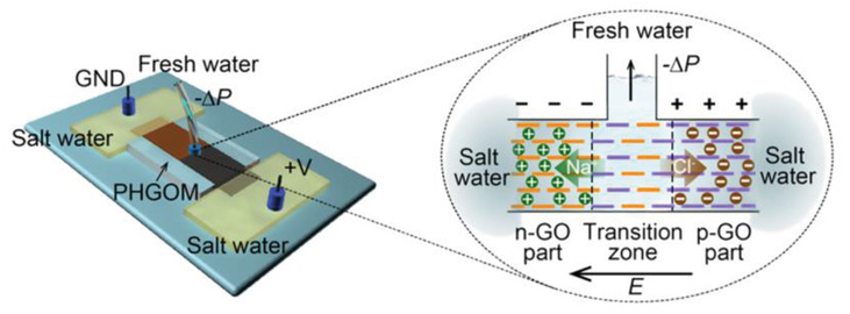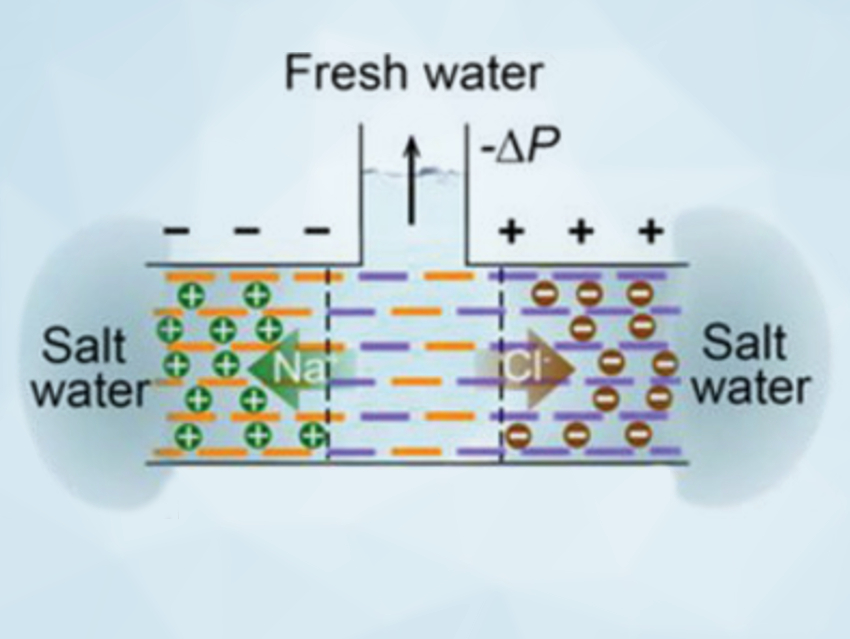Freshwater is scarce in some regions of the world. Desalination of seawater is one approach to solving this problem. To achieve this, water needs to be separated from the ions of dissolved salts—mostly sodium chloride. Layered graphene oxide (GO) membranes can be used for the precise sieving of small ions and molecules. To filter out sea salt, the spacing between GO layers needs to be reduced to several angstroms. However, such compressed membranes provide extremely low water flux.
Wei Guo, Technical Institute of Physics and Chemistry, Chinese Academy of Sciences, Beijing, and colleagues have tackled this issue and developed a planar heterogeneous graphene oxide membrane (PHGOM, pictured) with both excellent salt rejection and high water flux. The PHGOM consists of pristine GO (negatively charged, n‐GO), and polyethyleneimine‐conjugated GO (positively charged, p‐GO). The membrane was prepared by dual‐flow filtration of colloidal solutions of n-GO and p-GO.
The junction between the oppositely charged GO multilayers blocks the conduction of both cations and anions. Freshwater can pass through and be collected at the near‐neutral transition area. The system provides a high rejection rate of 97.0 % for NaCl and a water flux of 1529 L m−2 h−1 bar−1. According to the researchers, further optimization of the fine structure and chemical composition at the interface could allow the membranes to be used in portable devices with low energy consumption.

- Electric‐Field‐Induced Ionic Sieving at Planar Graphene Oxide Heterojunctions for Miniaturized Water Desalination,
Qi Wen, Pan Jia, Liuxuan Cao, Jipeng Li, Di Quan, Lili Wang, Yanbing Zhang, Diannan Lu, Lei Jiang, Wei Guo,
Adv. Mater. 2020.
https://doi.org/10.1002/adma.201903954




